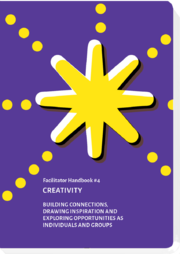Steps
1. Participants choose the news topic they want to work on. [15 min]
2. Working in small groups, participants practice different reading methods and familiarize themselves with the different techniques of newspaper theatre:
Newspaper Theatre: Techniques
Simple reading
The news is read without any further comments.
Completing
The news is read and an extra sentence is added to one part. For example: The news: “According to TIME magazine, Germany’s chancellor is the most powerful woman in the world”. Here participants might add: "Except in her party".
Connecting
Participants read the news from various articles. They contradict each other and disagree on the topic.
“Thanks to innovation, cars are becoming more and more environmentally friendly” “Pollution caused by cars poses more and more of a threat to public health.”
Rhythmical reading
By reading a text in a rhythmical way, different associations are created. For example: Read a political speech with the rhythm of a march, a tango or a waltz.
Adding
Similarly to the "added" reading, the advertisements of companies, organizations or politicians are added to the article content.
Mimed reading
By creating a big gap between content (text) and presentation, the news article is caricatured. For example: A speech on the serious situation the country is facing is given by an actor who sits at a table with a lot of food on it.
Improvisation
A scene is acted.
History
The news is related to events from the past. The idea is to learn from history.
(Re)definition
The vocabulary of news and headlines often hides information and reduces their meaning. In example, euphemisms like “welcome centres” for refugee camps. Or the way in which “climate change” does not convey the concrete threats by itself. The play tries to include their (re)definition and to make the information behind the terms visible again.
Empathy
The news is complemented by other information that is related but which is often not printed, such as impressions or emotions. For example: Participants announce the news of a state funeral with a detailed description of the guests' mourning.
Contextualizing
Some bogus reports only talk about specific details as headlines and do not mention facts. By acting the scene after having read out the news, this information is then given to the audience.
3. Participants choose an approach then develop a scene and perform it in the group setting. [45 min]
Reflection
After the performance follows a common group reflection. [30 min]
- What was the basic information underlying the scene? Why did you choose that?
- How did the theatre change your perspective on the topic?
- What was the feedback and emotions you received from the audience?
- Which important aspects in the topic are worth revisiting?
Reference
After Augusto Boal Theater der Unterdrückten. Übungen und Spiele für Schauspieler und Nicht-Schauspieler; Frankfurt;, 1989




